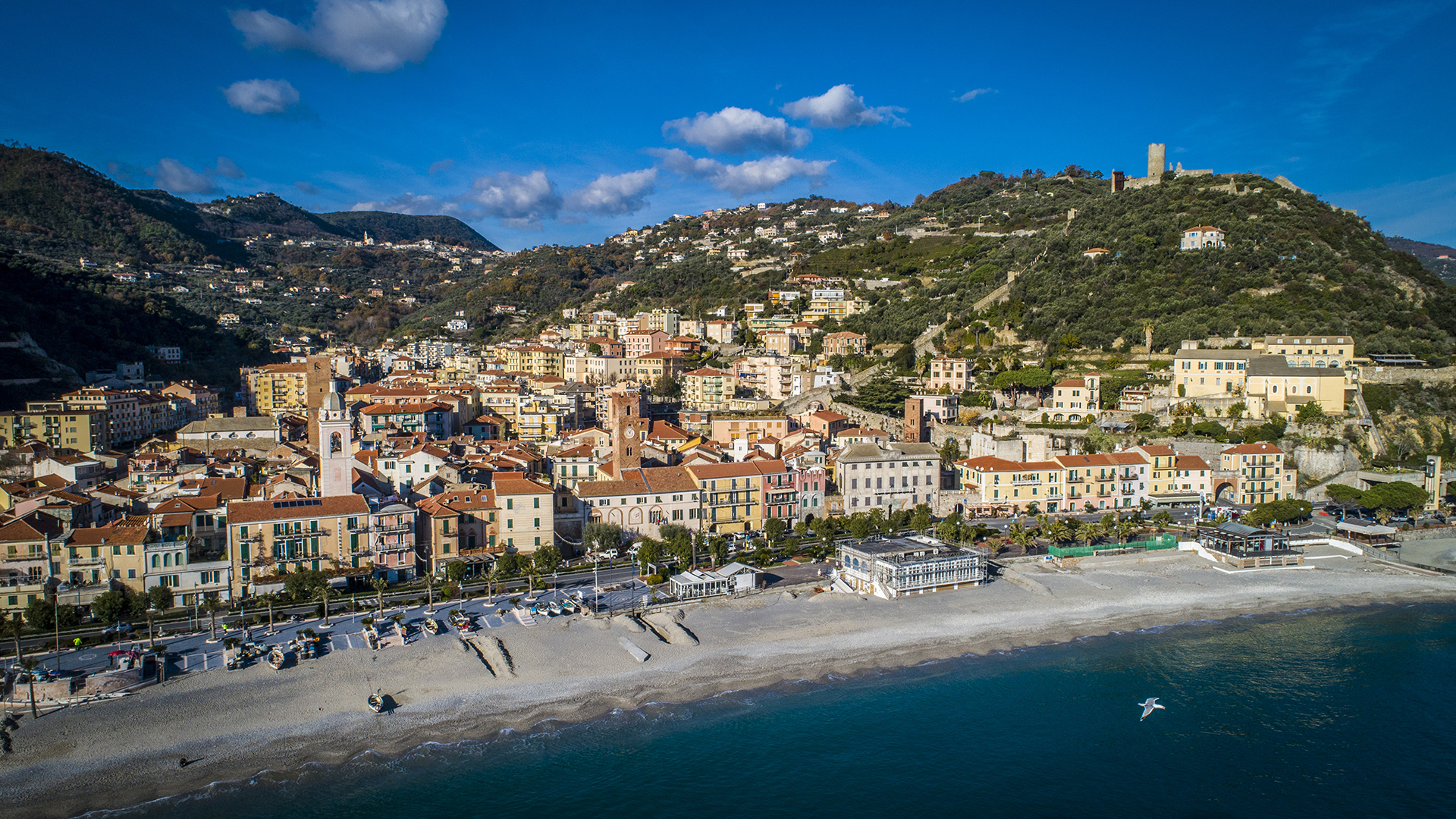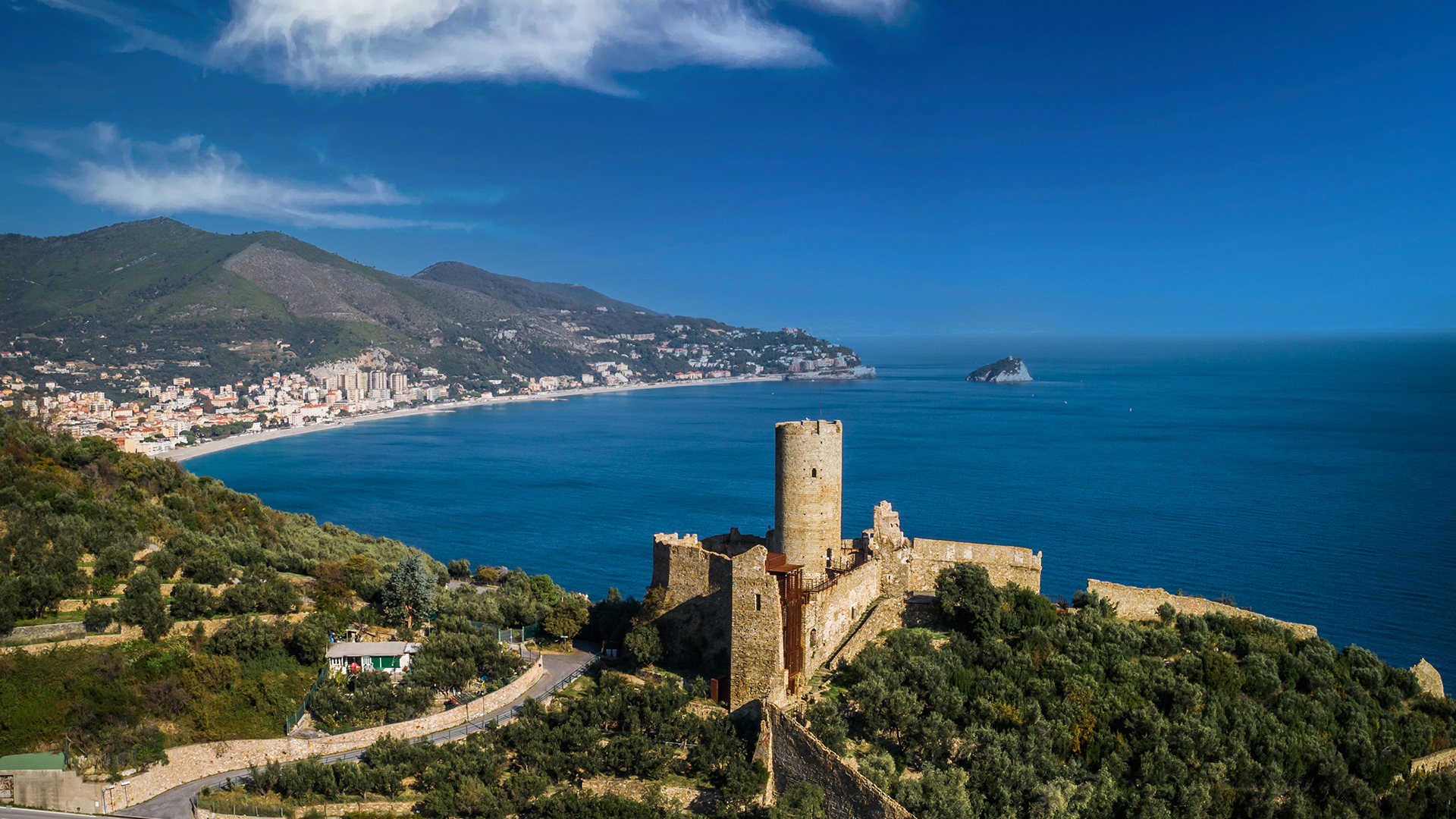Monte Ursino Castle (XII-XIV century): the medieval look that dominates the magnificent Borgo di Noli.
The Castle of Monte Ursino is located in dominant position on a hill in defense of the historic city center: it is the best preserved defensive monument of the municipal age in western Liguria. The first plant, think well, dates back to the twelfth century.
From the historical point of view, it is marked by numerous building phases, especially relating to the thirteenth century, such as the imposing polygonal keep, the circular watchtower and the fortified walls.
The latter descends on one side from the castle towards the bishopric complex and on the other defends the city upstream through a series of circular towers.
Curiosity: The English spouses Edward and Margaret Berry, scholars and travelers, residing in Bordighera since 1891, in their historical-artistic book “Alla porta Ovest d'Italia” (published in 1931) showed their appreciation of the village of Noli.
In particular, the Castle of Monte Ursino becomes the emblem of their book.
Subsequently, starting from 1181 the Marquis of Savona (Enrico) consented to the construction of walls, towers and fortified houses.
The towers are circular and followed one another at regular intervals along the sloping walls on the sides of Monte Ursino. The fortification reaches its present form around the XNUMXth century thanks to the Del Carretto family, feudal lords of Noli.
The expansion lasted until the end of the fourteenth century and the small port, by now inadequate for the commercial traffic of the time, determined the decline of the town.
Unfortunately, the decline of the Republic began and many Nolesi, from wealthy traders, turned into simple fishermen.
Even today, you can admire the Castle, Through a simple walk, suitable for the whole family, which goes from the center of Noli to the monument.
Impossible not to see it, since the first constructions, it was able to control both the sea and the coast and the old Roman road passing through the hills in the town of Voze, and used until the eighteenth century.





